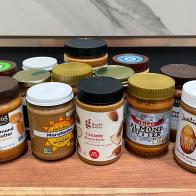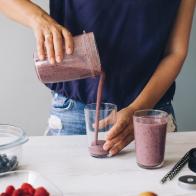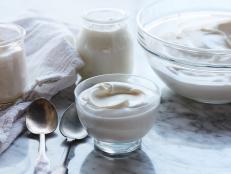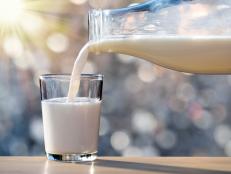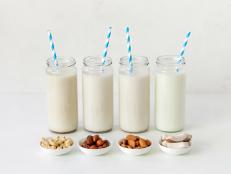What Is Skim Milk?
Skim milk is lower in fat and calories than other milk varieties, but does that make it better for you? A dietitian weighs in.

boonchai wedmakawand/Getty
What Is Skim Milk?
Skim milk, also labeled as nonfat milk, has less than 0.5% milk fat according to the FDA (compared to 3.5% fat in whole milk and 1% or 2% fat in 2% milk). Dairy farms make skim milk by simply removing some of the fat from whole milk. Wondering what to pour in your bowl of cereal? Skim milk is certainly one healthy option. Here’s a look at the nutrients found in nonfat milk and the science that says it can be part of a healthy diet.
Skim Milk Nutrition Facts
All milk, including skim milk, is either a good or excellent source of 13 essential nutrients. Although there has been a lot of new research on the role of fuller fat dairy milk as part of healthy eating patterns due to its unique dairy food matrix and fatty acid profile, there are also years of science behind the benefits of lower fat dairy milk like skim milk and low-fat (1%) milk.
The 13 essential nutrients found in milk (including skim milk) include calcium, protein, vitamins A, B-12 and D, niacin, selenium, potassium, phosphorus, riboflavin, pantothenic acid, zinc, and iodine.
Calories In Skim Milk
There are about 85 calories in 1 cup of skim milk.
What the Dietary Guidelines Recommend for Milk
Before the dietary guidelines are written, a dietary guidelines advisory committee reviews all the scientific research to make their recommendations. The 2020-2025 dietary guidelines for Americans (DGA), recommend three servings per day of milk and dairy, including low fat and skim cow’s milk dairy as part of a healthy dietary pattern. The DGA discusses three healthy dietary patterns including a healthy U.S. dietary pattern, Mediterranean dietary pattern, and vegetarian dietary pattern, which all contain milk (including skim milk).
The DGA recommended that most Americans choose low fat or fat free dairy foods (like skim milk) as whole and reduced fat milk and dairy food contain more calories and more saturated fat, which has been shown to increase LDL or “bad” cholesterol. However, there is emerging evidence that has shown that eating dairy foods, even whole fat dairy foods, isn’t linked to a higher risk of heart disease and can also be part of a heathy dietary pattern. In addition, the American Academy of Pediatrics and the American Heart Association recommend low fat and skim milk as primary milk choices for children ages 2 years and up.
Is Skim Milk Healthy?
As mentioned above, milk (including skim milk) is recommended in all three dietary patterns. Healthy dietary patterns, which include skim milk, are associated with a lower risk for cardiovascular disease, obesity, and type 2 diabetes. In addition, sipping on milk has been linked to an 8% lower risk of high blood pressure and stroke. It was the initial DASH (dietary approaches to stop hypertension) study published in 1997 in the New England Journal of Medicine that showed that eating a dietary pattern with fruits, vegetables and low fat dairy products (including skim milk) that had a greater effect of lowering both systolic and diastolic blood pressure (the top and bottom numbers of your blood pressure, respectively) compared to eating a dietary pattern with more fruits and veggies alone.
In addition, drinking skim milk (and other dairy foods) has also been linked to improved bone health throughout childhood and into adulthood. Research also shows that drinking milk (including skim milk) and eating dairy foods is associated with a lower risk of hip fracture in both men and women.
Bottom Line: Skim milk is a nutritious choice that provides many health benefits and is a healthy choice when included in your healthy eating pattern.
Toby Amidor, MS, RD, CDN, is a registered dietitian and consultant who specializes in food safety and culinary nutrition. She is the author of The Greek Yogurt Kitchen: More Than 130 Delicious, Healthy Recipes for Every Meal of the Day. She is also an ambassador with the National Dairy Council.
*This article was written and/or reviewed by an independent registered dietitian nutritionist.
Related Links:
What to Look for on a Yogurt Label


















